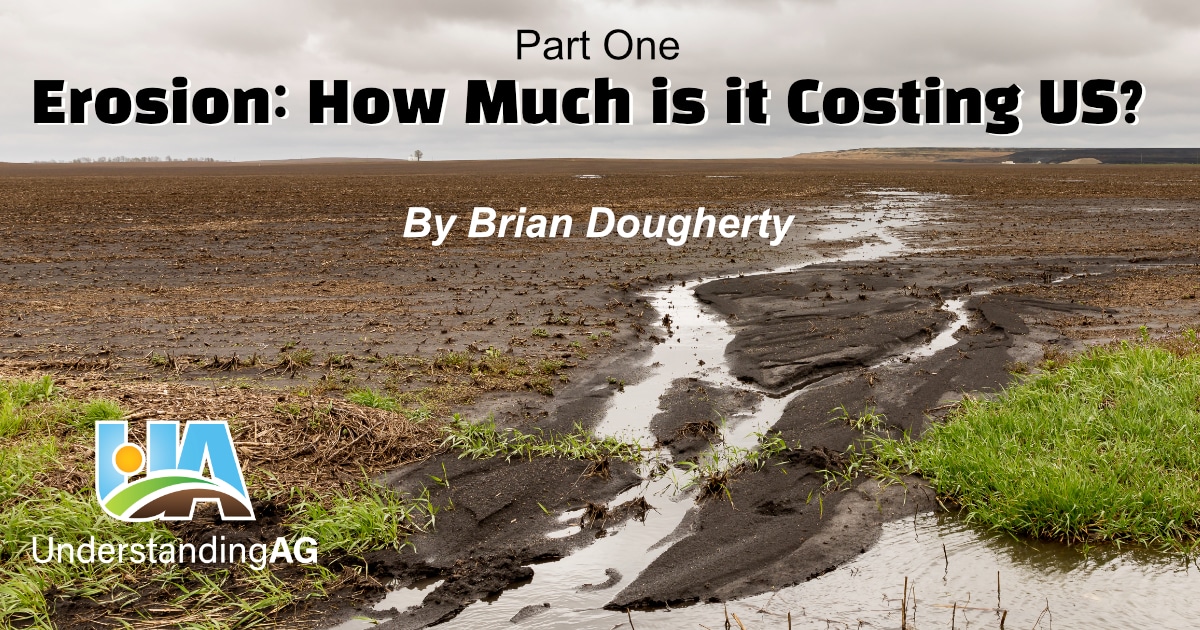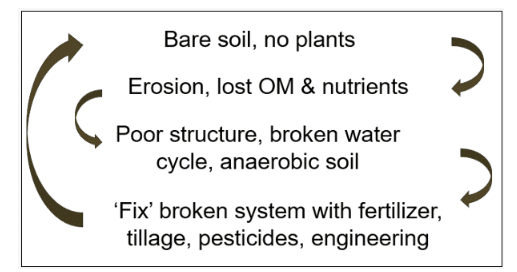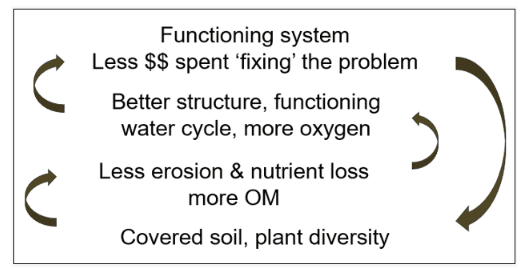
Soil erosion has been one of the most persistent challenges humanity has faced since the advent of agriculture over 10,000 years ago. Loss of productive capacity of the supporting land base contributed to the collapse of numerous civilizations during that time. Poor grazing practices and tillage were the main causes of land degradation historically and mechanized agriculture has greatly increased the rate of erosion from cropland over the past century. It is estimated that the current global erosion rate is around 75 billion tons/year. This history is detailed in the book Dirt: The Erosion of Civilizations by David Montgomery. It is a fascinating and sobering read, and I highly recommend it if you are inclined to think that we are now somehow immune to a similar collapse in agricultural productivity.
Previous generations of people would simply move on to a new piece of land when the soil it lost its capacity to produce but we no longer have that option, and we will eventually exhaust the resources we currently use to prop up our dysfunctional food system if we do not change course. Land degradation is as severe as ever. We have just masked the symptoms of lost topsoil and poor soil function with added fertility, pesticides, and other technological and engineering fixes. These interventions do not repair broken ecosystem processes, they just treat the symptoms.
Only by addressing the underlying cause of land degradation, which is human mismanagement, can we stop soil loss and regenerate Earth’s capacity to support life. This is illustrated in Figure 1, which shows the death cycle of agricultural land degradation.
Figure 1. The downward spiral of land degradation will never be ‘fixed’ by treating the symptoms and repeating the same actions the next year. We must address the underlying cause, which is poor land management.
How we manage our farms and ranches is a choice. There are economic, social, and political barriers to change, but change we must. We as individuals, communities, and societies, can choose a better path forward and we can turn Figure 1 on its head and manage in a way that improves the land over time rather than degrading it. Implementing the soil health principles addresses the underlying cause of erosion and poor soil function, principally poor soil aggregation. Minimizing disturbance, armoring the soil, keeping a living root in the ground, adding diversity, and incorporating livestock within the context of our farms and ranches all help to build soil aggregates. Aggregation is the foundation of a healthy, functioning soil that infiltrates water and allows for good gas exchange, which addresses the root cause of land degradation.
Figure 2. By addressing the root cause of erosion and poor soil function, we can reduce the need for expensive ‘fixes’ that mask the underlying cause of land degradation, and regenerate soil over time.
Figure 2 shows the life cycle of a regenerative system. By addressing the root causes of degradation, soil function and productivity improve, and topsoil is rebuilt rather than eroding away. Only then can we reduce our reliance on expensive, supplemental inputs and technological ‘fixes’ that mask the symptoms but do not address the root causes.
We would be wise to learn from nature and recognize that we do not have the resources to engineer our way around what is fundamentally a biological problem. We must work with nature rather than fighting against it and learn the lessons from prior civilizations that collapsed under the weight of poor land management. There is no “somewhere else” to go.
In part two, I’ll examine the economic costs of soil erosion for farmers and ranchers, and the benefits of preventing it.


